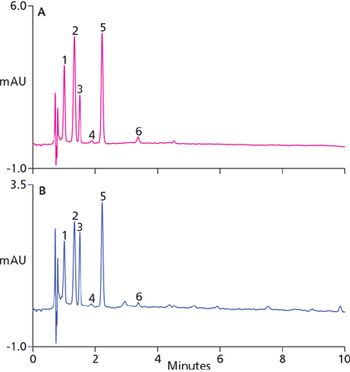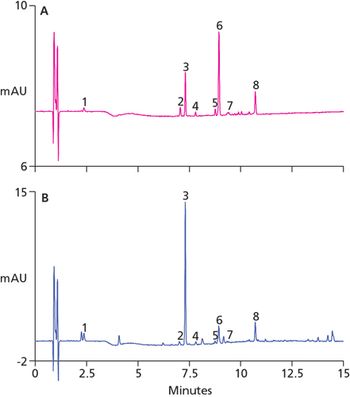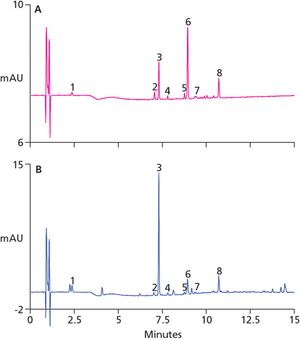
Anthocyanins are a sub-class of naturally electron deficient and powerful antioxidants called flavonoids that are responsible for the red, orange, and blue coloration in fruits and flowers.

Anthocyanins are a sub-class of naturally electron deficient and powerful antioxidants called flavonoids that are responsible for the red, orange, and blue coloration in fruits and flowers.

Tea, one of the most consumed non-alcoholic drinks worldwide, contains catechins that are powerful antioxidants thought to provide many health benefits, including reduction of cholesterol and obesity, and protection against cardiovascular disease and cancer.

Oxidation of amino acid residues can alter a protein's biological activity, half-life and immunogenicity. Peptide maps can be used to detect oxidized peptide fragments. Peptides are commonly separated by RP-HPLC; however, hydrophobic interaction chromatography (HIC) is an alternative technique offering different selectivity.

Published: June 1st 2011 | Updated:

Published: June 1st 2011 | Updated:

Published: October 2nd 2009 | Updated: